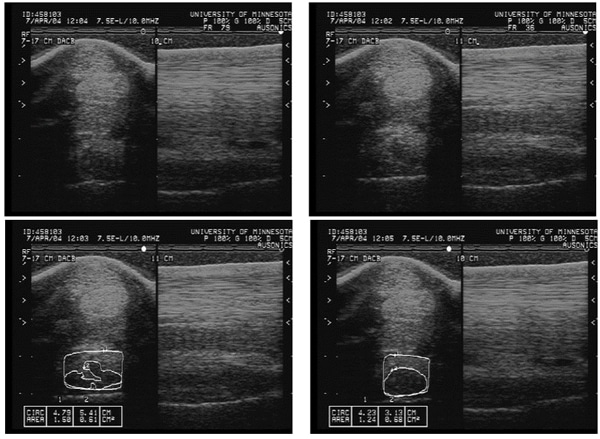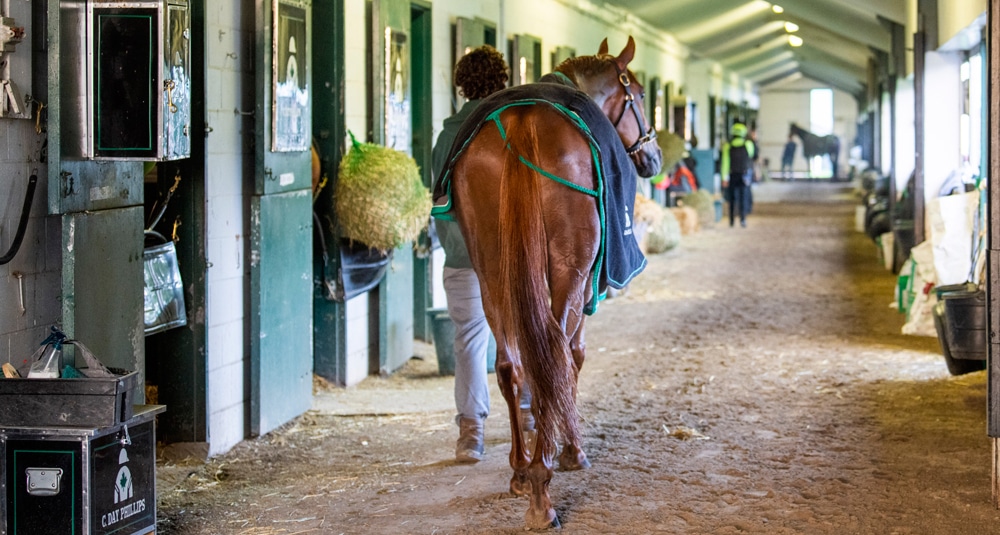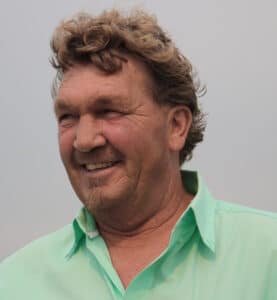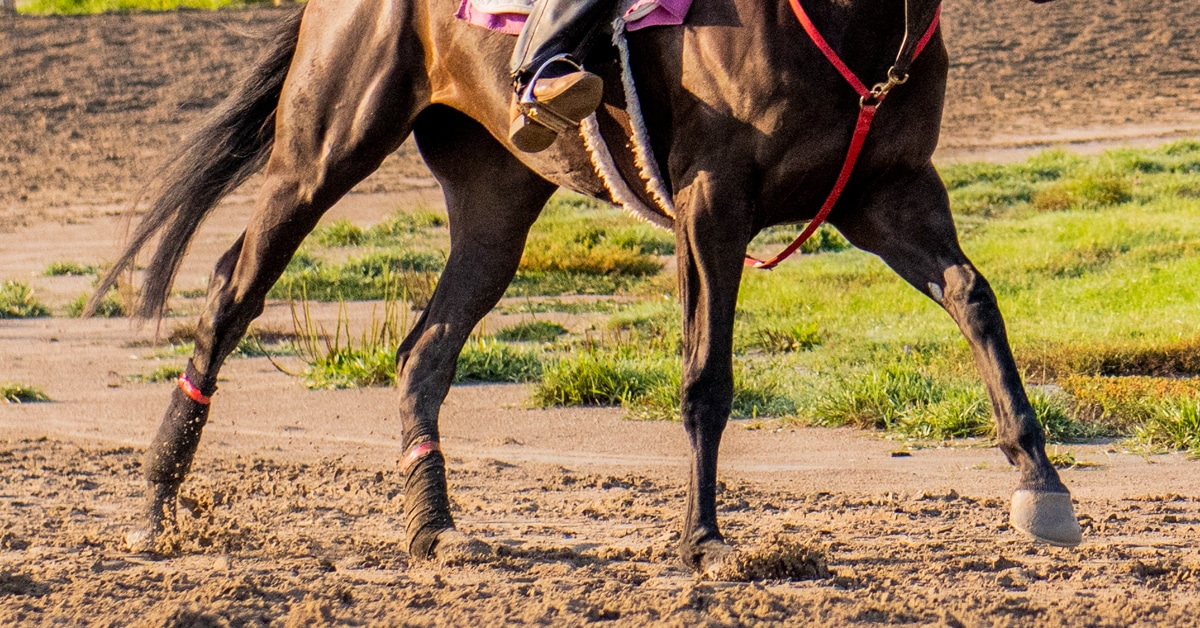As high-performance athletes, racehorses are susceptible to soft-tissue injuries – particularly of the tendons and ligaments in the lower legs.
In 2017, Equine Guelph surveyed grooms, owners, trainers and other industry stakeholders on the health and wellbeing of horses in Ontario’s three racing sectors. The Thoroughbred and Standardbred sectors ranked soft-tissue injuries (i.e. bowed tendons and suspensory ligament issues) as the most common form of injuries, while the Quarter Horse contingent listed them second after bone injuries.
Essentially, tendons connect muscle to bone. Ligaments connect bone to bone. Both are comprised of stacked parallel bundles of small collagen fibres, an arrangement that allows for stretch and strength under forces experienced during exercise such as extension, concussion, torque and flexion. When these fibres are stretched beyond their limit, due to sudden trauma or repetitive motion that causes weakening over time, a sprain or tear occurs.
Depending on the extent of the injury, the process of rebuilding the complicated network of tendon or ligament fibres can last weeks, months, even up to a year. And that’s a horse out of work, costing money, not making it. A pain for everyone involved, soft-tissue injuries can often be resolved with dedicated treatment and rehabilitation. But it’s not a given.
That’s why Alberta trainer Tim Rycroft (recently named Century Mile’s leading trainer for the fifth consecutive year) advises getting on top of problems early. “Find out what you’re dealing with. Don’t dismiss things.”

Ultrasound of tendon fibers: each top image is repeated below with the damaged area outlined on the cross-sectional view. The black areas are damaged fibers (missing) and serum or blood due the trauma. (open.lib.umn.edu image)
Rycroft investigates immediately if he detects even a small spot of heat and/or swelling. Both are the hallmark signs of inflammation, which is actually the first stage of healing. It begins immediately after a trauma occurs and lasts about a week, as ruptured fibres fill with blood-carrying molecules that remove dead tissue and clean up debris at the site. The horse may or may not be lame or experience sensitivity to palpation.
“First and foremost, diagnose it. The worst thing you can do is run or exercise or do anything with a horse after they’ve had a little tear or something.”
Rycroft calls in a veterinarian to ultrasound the area of concern. The diagnostic imaging tool of choice for soft tissues, ultrasound can evaluate the fibre pattern/alignment, presence of fluid and size of the tendon or ligament. If the upshot is a soft-tissue injury “Time is the best healer,” Rycroft, says.
Step one is stall rest. The duration depends on the injury’s extent and its response to the initial treatment protocol of reducing inflammation. For Rycroft and team this consists of poulticing, sweats, massaging the area, cold hosing, support bandaging and administering pain relievers and non-steroidal anti-inflammatory medications.
Movement is Key
Once the inflammation has settled, the second phase of healing begins, and cells start regenerating the damaged tissue. A scaffolding develops across the torn fibres, however, it’s randomly formed and, consequently, still weak. Controlled exercise comes into the picture at this point. Mechanical stress or load on the tendon or ligament begins proper tissue regeneration by encouraging the fibres to line themselves up properly. Plus, it helps keep the horse fit.
“It’s never good to just lock them up,” says Rycroft. “You’re not going to hurt them by hand walking. So, 15 to 20 minutes a day for the first three weeks or a month and then into a small turnout so they can’t rip and roar and hurt themselves.”

Lots of handwalking during recovery is necessary, and turnout in a small pen where they “can’t rip and roar and hurt themselves.” (Cara Grimshaw photo)
The last stage of healing is remodelling when cells organize such that tendon or ligament fibres arrange into a normal pattern (hopefully). Now, the horse’s workouts in term of load and stress should be gradually increased. Yet, it can be somewhat of a conundrum: too much exercise too fast may inhibit healing, while increasing exercise levels too slowly can cause the horse to lose fitness and inhibit adequate fibre healing.
“I like to ride them with some weight on their back. Just walk for a few days, jog for a bunch of days. If nothing changes and it stays good, then I proceed,” says Rycroft. As important as it is to consult with veterinarians throughout the rehabilitation process, with ultrasound updates and physical assessments, it’s just as necessary to check in with the horse, he notes.
“If you see changes for the good, you know what you’re doing is working. If you see changes for the bad, you’ve got to pack up and restart your program. Horses will tell you if they’re coming around or not.”

Tim Rycroft.
Veterinarians can also offer surgical options (i.e. tendon splitting, desmotomy, neurectomy) plus a host of other adjunctive modalities. Biologics such as stem cells and platelet-rich plasma (PRP) are regenerative therapies administered by injection directly into the injury site that deliver certain cells that encourage the body to self-heal. Low-level laser, therapeutic ultrasound and extracorporeal shockwave therapy may also be beneficial. Non-invasive, they encourage blood flow and tissue healing.
All these treatment modalities, naturally, come with cost considerations. And, then in the end, sometimes, no matter how much time and money are spent rehabbing, tissue remodelling doesn’t go according to plan. The fibre cell matrix remains haphazard. Weaker and less elastic, the tendon or ligament is predisposed to further injury, and you might find yourself back where you started.
“If you see a little black dot on that ultrasound. I don’t care how much you do. A lot of times that hole never fills in again,” says Rycroft.
His approach is proactive. “I don’t like to guess my horses’ problems. If you dig deep enough, they’ve all got a little something going on you can help them with. A lot of it is preventive if you just want to work at it a little bit,” he notes. “I’ve got horses that are nine, 10 years old still running good. They’re sound and happy. I turn a lot of horses out. I give them big blocks of time between races. I try not to break them down on the racetrack.”


